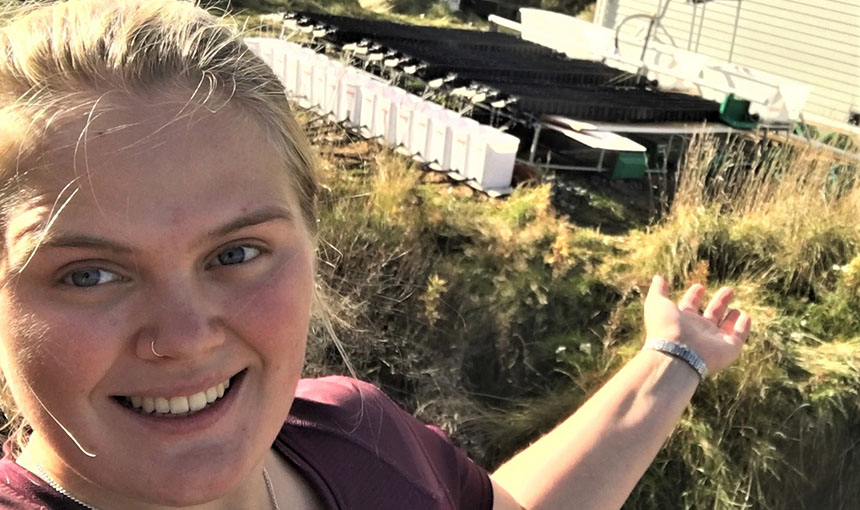Stirring waters to clean them up
Disrupting waterways may hold the key to long-term stream restoration because it highlights the weaknesses of unwanted invertebrates living in the ecosystem.

This is the theory being tested by University of Canterbury (UC) student Issie Barrett as part of a BioHeritage Challenge project focused on restoring degraded streams and rivers.
At UC’s Cass Field Station in Arthur’s Pass, Issie has built a bespoke outdoor system that artificially recreates freshwater stream ecosystems. She fills separate sections of the system with invertebrate and bug samples that have been taken from a range of streams – some healthy, some degraded and others that are prone to flooding.
Eighty percent of the sample stream communities are then disrupted for 24 hours with elements including nutrients, sediment or a flood of water. This enables Issie to see changes that the disruption causes to the community of invertebrates living in each water sample.
“For example, we could disrupt – or stress – the stream with a flood which is likely to get rid of snails because they have the characteristic of not being able to swim. Knowing how to get rid of snails is a good thing because we don’t want them in a healthy waterway. Getting rid of them frees up space for more sensitive, desired species,” says Issie.
Issie likens a healthy river – one that has a diversity of bugs that are food for larger organisms like fish – to a glass of rainbow juice.
“When a river is stressed, only the hardiest species like sedentary worms and snails can survive – taking up all available space. My theory is that we need to do something to destabilise the community, removing the biological advantage that worms and snails have.”
Read Issie’s blog to find out more about her rainbow juice concept.
Issie’s trial is part of a project that is using freshwater ecosystems as a model to test how degraded ecosystems can be resistant to disruptions – including those that aim to restore them. The project is being led by doctors Helen Warburton and Catherine Febria of the University of Canterbury.
“An ecosystem’s ability to withstand and recover from a disruption are commonly associated with healthy communities. However, degraded ecosystems can also be resistant and resilient to disruptions, making them very hard to restore,” Helen says.
“In New Zealand, many ecosystems are degraded, having exceeded critical tipping points that leave them locked in a resistant state.”
The next stage of Issie’s trial is to extend the length of time that the disruption is carried out. The cause of the stress will then be removed, to see if the stream sample can be restored. In its third year, the trial will be carried out in a real stream.